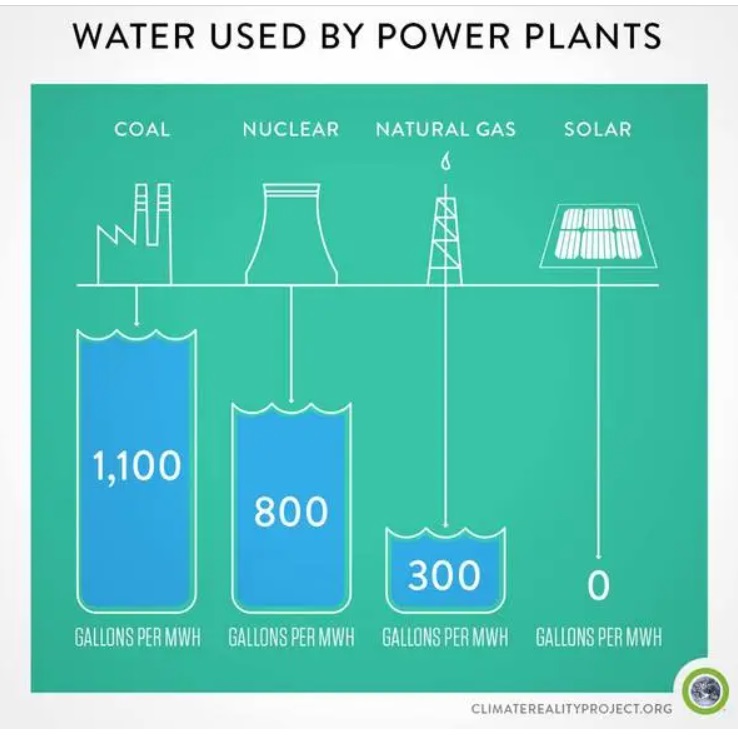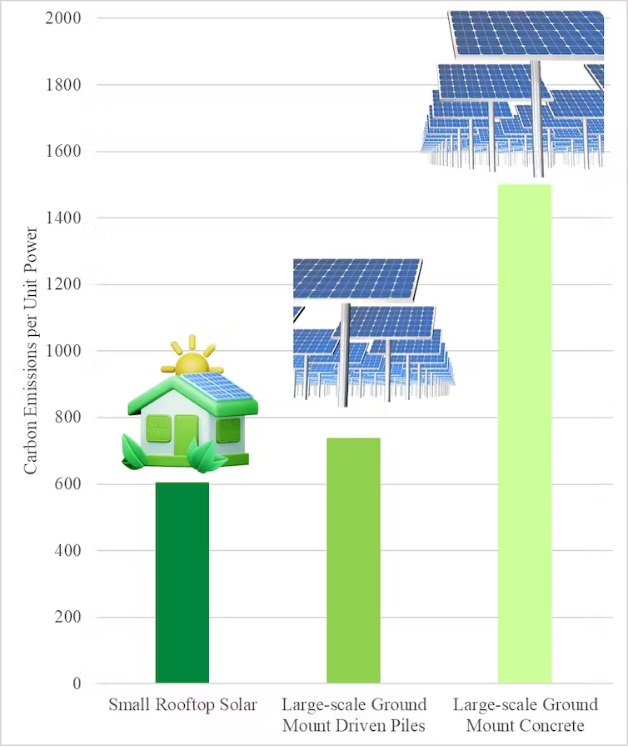A study conducted at the University of Western Ontario compared both large and small solar installations and concluded that small-scale solar systems are better for the environment than even the largest, most efficient, utility-scale solar project.
Solar is scaling up in both the U.S. and Canada in part because Today solar energy is the lowest cost form of new-build electricity in many markets, according to a the energy and resources report by Ernst & Young, which notes that the global weighted average levelized cost of electricity (LCOE) for solar is 29% lower than the cheapest fossil fuel alternative.
To eliminate carbon emissions and meet U.S. and Canada’s clean energy goals, many more solar panels must be installed. A study that looked at the agrivoltaic potential in Canada predicted we would need only 1% of Canada’s agricultural land to offset all fossil fuels for electricity generation if we installed large-scale solar farms. While this is a modest amount of land, the researchers at University of Western Ontario questioned whether it is better for the environment to have a few large-scale solar farms or many smaller rooftop systems.
The lifecycle analysis study conducted by Riya Roy and Joshua M. Pearce compared rooftop solar systems to multi-megawatt utility-scale solar PV systems from production to decommission. They found rooftop solar systems require 21% to 54% less input energy, make 18% to 59% less carbon dioxide equivalent of greenhouse gas emissions, and consume a reduced quantity of water ranging from 1% to 12% per kilowatt-peak.

Thus the researchers calculated energy payback time of rooftop solar systems is approximately 51% to 57% lower than that of ground-mounted solar systems across all locations, with the main reason being that rooftop systems don’t required the racking or trackers used in large-scale projects. Plus they are usually closer to transmission lines, whereas many utility-scale installations need lines added or they must account for transmission losses if running a long distance.

Source: Joshua M. Pearce
The researchers determined that the carbon dioxide payback time was 378% to 428% longer for ground mount large-scale solar installations, compared to rooftop solar for the same modules.
The reality
While the research shows that small, rooftop installations are better for the environment, the researchers concluded that a mix of both is needed because there are not enough rooftops to meet electrification needs, if we take into account heating and transportation. Agrivoltaics, which is dual-use, offers advantages because it uses land for both energy generation as well as food production, according to the authors of the study.
This content is protected by copyright and may not be reused. If you want to cooperate with us and would like to reuse some of our content, please contact: editors@pv-magazine.com.








Agrivoltaics could get a boost with bifacial vertical panels leaving more usable space.
Besides Residential, Heating & Transportation.. a large part of Global Energy is used in Industry, Agriculture and Commercial Sectors too.. In a ZERO POLLUTION EARTH ALL these Sectors will require Pollution Free Solar Electricity… too..!!!
The conclusion of the findings in the summary in the study (link) is “…. the greenhouse gas emissions attributed to the ground-mount system with rack a is 2.5 times, and ground-mount system with rack b is 1.2 times greater per kWp than that of the rooftop system.” Meaning that the difference in LCA green house emission between the rooftop and the ground mounted “rack b” is only 20%. While from the information it can be concluded that the LCA GHG emission attributed to “rack a” is more than 2 times greater per kWp than that of ground mounted “rack b”. Therefore I will assume that the most interesting finding is that huge difference between the 2 types of ground mounted. And the headline message should be that rooftop and ground mounted Rack B type has a much lower LCA GHG emission and therefore “rack a” should newer be chosen if there is not really weighty reasons in other areas for it. Unfortunately, I find no information about the difference between ground mounted type “rack a” and “rack b”. I think that it is crucial for the the message of the article that this information is added.